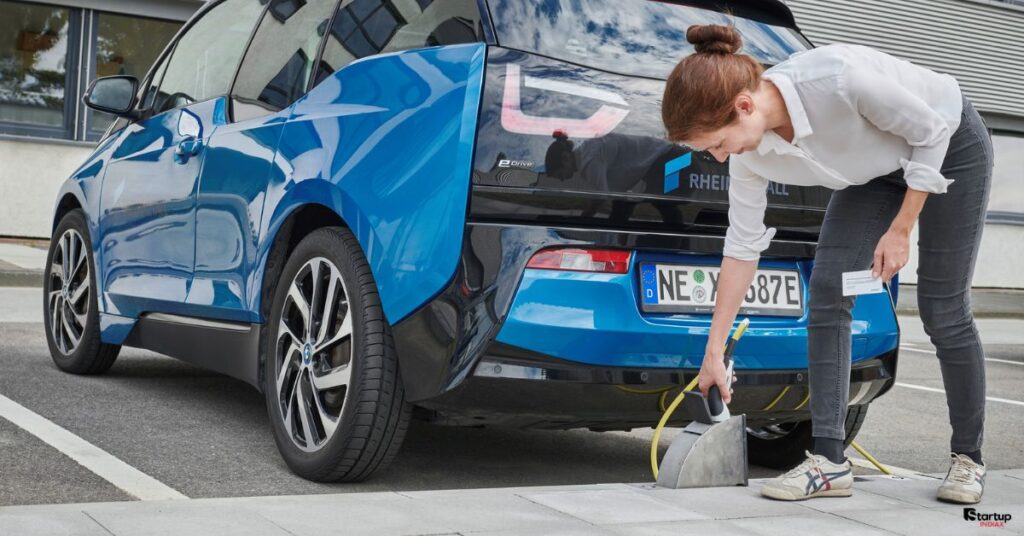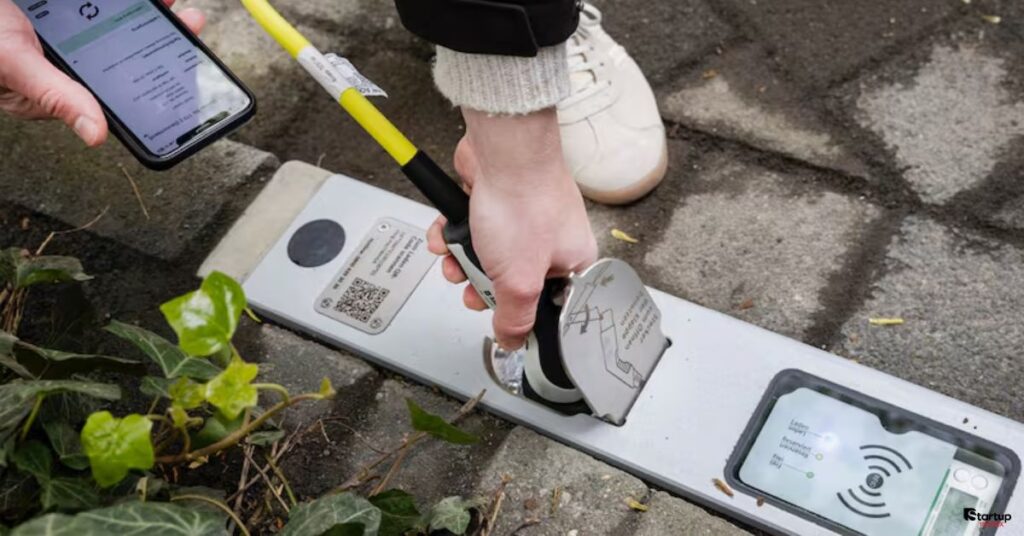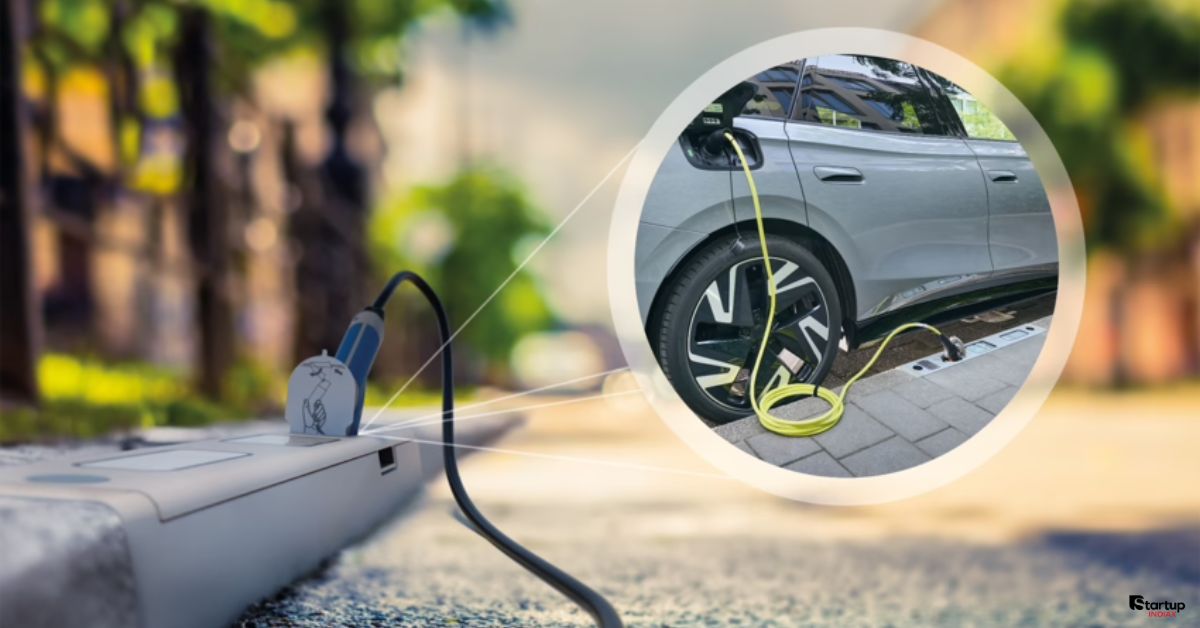Curbside charger technology is revolutionizing how electric vehicles power up in dense urban environments, offering a groundbreaking solution that eliminates the need for bulky charging stations on valuable sidewalk real estate. This innovative approach to EV infrastructure integrates charging capabilities directly into curb infrastructure, addressing the critical space constraints that have long plagued city planners and EV adoption advocates. As urban areas worldwide grapple with the dual challenge of expanding EV charging networks while preserving pedestrian spaces, curbside chargers emerge as the definitive answer to sustainable urban mobility. The technology promises to transform city landscapes by providing accessible, space-efficient charging solutions that seamlessly blend into existing street infrastructure while maintaining full functionality for pedestrians and traffic flow.
Table of Contents
What Makes Curbside Chargers Different from Traditional EV Charging?
Traditional EV charging stations have created significant urban planning headaches. These bulky installations typically require dedicated space on sidewalks, parking lots, or specially designated areas, often conflicting with pedestrian traffic and urban aesthetics. The conventional approach means cities must sacrifice valuable real estate for charging infrastructure, creating bottlenecks in walkways and reducing accessibility for wheelchair users and families with strollers.
Curbside charger systems flip this paradigm entirely. Instead of adding infrastructure on top of existing urban landscapes, these innovative solutions integrate charging technology directly into the curb itself. Companies like Rheinmetall have developed curb-integrated charging systems that house all electrical components below street level, with only minimal surface indicators visible to users.
This approach represents a fundamental shift from additive infrastructure to integrated solutions. While traditional charging stations announce their presence with tall posts and bulky equipment, curbside chargers maintain the visual continuity of streetscapes while providing the same – or often superior – charging capabilities.
The technology typically involves embedding charging cables and connectors within specially designed curb sections, allowing EV owners to simply park adjacent to the curb and connect their vehicles without navigating around additional street furniture or competing with pedestrians for space.
5 Revolutionary Curbside Charger Benefits
Benefit #1: Zero Sidewalk Space Occupation
The most immediate and visible advantage of curbside charger technology lies in its complete elimination of sidewalk occupation. Traditional charging stations can consume 6-8 square feet of sidewalk space per unit, multiplied across hundreds or thousands of charging points in a single city, this represents enormous amounts of pedestrian territory surrendered to automotive infrastructure.

Credit – Rheinmetall – The integrated technology group
Curbside chargers solve this problem by utilizing the vertical space within curb infrastructure itself. The charging components are housed entirely below the sidewalk level, within reinforced curb sections that maintain their structural integrity while accommodating electrical systems. This means pedestrians retain 100% of their sidewalk space while EV infrastructure expands seamlessly.
For cities like New York, London, or Tokyo where every square foot of sidewalk space commands premium value, this benefit translates directly into improved urban livability. Wheelchair accessibility remains uncompromised, parents with strollers don’t need to navigate around charging posts, and the visual clutter that typically accompanies EV infrastructure disappears entirely.
The space efficiency also enables much higher charging point density. Where traditional installations might allow 10-15 charging stations along a city block, curbside charger systems can accommodate 30-40 charging points in the same linear distance, dramatically improving EV charging availability without any sidewalk space sacrifice.
Benefit #2: Seamless Urban Integration
Urban aesthetics matter enormously for city planning and resident satisfaction. Traditional charging stations, regardless of their design quality, introduce foreign elements into streetscapes that have evolved over decades or centuries. These installations often clash with historic architecture, interrupt sight lines, and create visual noise that degrades the pedestrian experience.

Credit – Rheinmetall – The integrated technology group
Curbside charger technology addresses these concerns through invisible integration. From street level, the charging infrastructure appears as slightly modified curb sections with discrete access panels or retractable charging cables. The overall streetscape maintains its intended character while gaining advanced technological capabilities.
This seamless integration proves particularly valuable in historic districts, downtown business areas, and residential neighborhoods where community opposition to traditional charging infrastructure has slowed EV adoption. Cities implementing curbside charging report significantly reduced community resistance compared to traditional charging station installations.
The technology also allows for customization to match existing curb materials and designs. Whether a street features granite curbs, concrete barriers, or decorative stonework, curbside charger systems can be engineered to maintain visual consistency while providing full charging functionality.
Smart design features can even enhance urban aesthetics. Some curbside charger implementations include LED indicators that provide subtle lighting for improved nighttime visibility, or integration with smart city systems that coordinate with traffic management and urban data collection.
Benefit #3: Enhanced Pedestrian Safety
Pedestrian safety represents one of the most compelling arguments for curbside charger adoption. Traditional charging stations create numerous safety hazards: protruding posts that pose collision risks, charging cables that cross pedestrian paths, and visual obstructions that hide potential threats or traffic conflicts.
Curbside chargers eliminate these hazards entirely. With charging infrastructure embedded below street level, pedestrians face no protruding obstacles. Charging cables either retract into the curb when not in use or are designed to remain at vehicle level, never crossing pedestrian pathways.
The safety benefits extend beyond physical obstacles. Traditional charging stations can create blind spots where criminal activity might occur unobserved. The open sight lines maintained by curbside charger systems improve natural surveillance and reduce opportunities for street crime.
Emergency vehicle access also improves with curbside charging systems. Ambulances, fire trucks, and police vehicles can navigate streets without worrying about protruding charging equipment. In emergency situations, every second counts, and the unobstructed access provided by curbside chargers could literally save lives.
For vulnerable populations – elderly residents, individuals with mobility impairments, or families with young children – the elimination of sidewalk obstacles represents a significant quality of life improvement. Cities implementing curbside charging often report improved ADA compliance and increased pedestrian satisfaction scores.
Benefit #4: Cost-Effective Infrastructure Deployment
The economics of curbside charger deployment offer compelling advantages over traditional charging infrastructure. While the initial technology development costs may be higher, the total cost of ownership and deployment proves significantly more favorable for cities and charging network operators.
Traditional charging stations require dedicated electrical service, individual pedestals or mounting systems, and often significant site preparation including concrete pads and electrical trenching. Each installation point represents a separate construction project with associated permits, labor, and materials costs.
Curbside charger systems leverage existing curb infrastructure and can be deployed as integrated projects during routine street maintenance or reconstruction. This timing alignment dramatically reduces installation costs by combining projects and utilizing crews already working on street improvements.
The reduced vandalism and maintenance costs also contribute to long-term economic benefits. Traditional charging stations, with their exposed equipment and accessible components, face ongoing challenges with vandalism, weather damage, and accidental impacts from vehicles or maintenance equipment. Curbside chargers, with their protected below-ground components, demonstrate superior durability and lower maintenance requirements.
Startup INIDAX analysis suggests that cities can achieve 40-60% lower total cost of ownership with curbside charging systems compared to traditional installations, particularly when deployment is coordinated with planned infrastructure improvements.
Benefit #5: Future-Ready Smart City Compatibility
Modern cities increasingly embrace smart city technologies that integrate data collection, traffic management, environmental monitoring, and citizen services into coordinated systems. Curbside charger infrastructure provides an ideal platform for these integrated capabilities.
The below-ground installation space can accommodate multiple smart city sensors and communication equipment beyond just EV charging capabilities. These systems can monitor air quality, collect traffic data, provide public Wi-Fi access points, and integrate with emergency communication networks.
Advanced curbside charger systems can communicate with vehicle navigation systems to provide real-time availability data and enable predictive charging network management. This connectivity enables dynamic pricing, load balancing across the electrical grid, and integration with renewable energy sources for optimal sustainability.
The technology also supports future EV innovations including autonomous vehicle charging, where self-driving cars could automatically locate and connect to available curbside charging points without human intervention. This capability becomes essential as transportation evolves toward fully autonomous systems.
Data collected through curbside charging networks provides valuable insights for urban planning, traffic optimization, and energy management. Cities can use this information to make evidence-based decisions about future infrastructure investments and policy development.
Real-World Applications: How Cities Are Adopting Curbside Charging
Cities worldwide are beginning to recognize the transformative potential of curbside charger technology. London has initiated pilot programs in several boroughs, focusing on residential areas where traditional charging infrastructure proved difficult to implement due to space constraints and community opposition.
The pilot results demonstrate impressive adoption rates and user satisfaction scores. Residents report that curbside charging feels more natural and convenient than traditional charging stations, with many noting that they barely notice the infrastructure until they need to use it.
Berlin’s implementation focuses on integration with existing smart city initiatives. The curbside charger network feeds data into the city’s comprehensive urban management system, providing real-time information about energy usage, parking patterns, and neighborhood activity levels.
In North America, several California cities have begun exploring curbside charging as part of their climate action plans. The technology’s ability to dramatically increase charging point density while maintaining pedestrian access makes it particularly attractive for dense urban areas struggling to meet EV infrastructure targets.
Startup INDIAX research indicates that cities implementing curbside charging systems see 70% faster EV adoption rates in neighborhoods with the technology compared to areas relying solely on traditional charging infrastructure.
Technical Specifications: Inside the Curbside Charger Innovation
The engineering behind curbside charger systems represents significant technological advancement. The primary challenge involves integrating electrical components, safety systems, and user interfaces into the confined space within curb infrastructure while maintaining structural integrity and weather resistance.
Most systems utilize modular designs that allow for easy maintenance access and component replacement. The electrical systems are typically rated for submersion and extreme weather conditions, ensuring reliable operation in all climates.
Charging capabilities generally match or exceed traditional Level 2 charging stations, with many systems offering DC fast charging options. The compact design actually enables more efficient electrical layouts, often resulting in faster charging times than comparable traditional installations.
Safety systems include ground fault protection, overcurrent protection, and advanced monitoring systems that can detect and respond to electrical anomalies faster than traditional charging equipment. The below-ground installation provides additional protection from weather, vandalism, and accidental damage.
User interfaces vary by manufacturer but typically involve either retractable charging cables that extend from discrete curb panels or flip-up connectors that provide charging access while maintaining a low profile when not in use.
Market Impact: Industry Response and Investment Trends
The EV charging industry has responded enthusiastically to curbside charger innovations. Major charging network operators are investing heavily in the technology, recognizing its potential to dramatically accelerate urban charging network deployment.
Automotive manufacturers are also taking notice. Several major EV producers have announced partnerships with curbside charging companies to ensure compatibility and optimize integration between vehicles and charging infrastructure.
Investment trends show significant venture capital and government funding flowing toward curbside charging startups and established companies developing these technologies. The market potential for urban EV charging solutions has attracted attention from major infrastructure investment funds and government agencies focused on clean energy transition.
Industry analysts project that curbside charging could capture 30-40% of the urban EV charging market within the next decade, representing billions of dollars in infrastructure investment and technological development.
Challenges and Solutions in Curbside Charger Implementation
Despite the significant advantages, curbside charger implementation faces several challenges that cities and technology providers are actively addressing.
Installation complexity represents the primary technical challenge. Integrating electrical systems into existing curb infrastructure requires careful engineering to maintain structural integrity while accommodating charging components. Solutions involve modular designs and specialized installation techniques that minimize disruption to existing street infrastructure.
Regulatory approval can be complex, as curbside chargers often fall into gray areas between transportation infrastructure, electrical utilities, and public safety regulations. Cities are developing new regulatory frameworks specifically designed to accommodate this technology while maintaining safety standards.
Coordination with utility companies requires careful planning to ensure adequate electrical supply and grid integration. Many implementations involve partnerships between cities, charging companies, and utilities to develop comprehensive deployment strategies.
Public education remains important, as many residents and visitors may not immediately recognize or understand how to use curbside charging systems. Clear signage, mobile app integration, and public awareness campaigns help address these concerns.
Future Outlook: What’s Next for Urban EV Infrastructure
The future of urban EV infrastructure increasingly points toward integrated, space-efficient solutions like curbside chargers. As cities worldwide commit to carbon neutrality goals and EV adoption accelerates, the demand for innovative charging solutions will only intensify.
Technological advances continue to improve curbside charger capabilities. Wireless charging integration could eliminate the need for physical connectors entirely, further streamlining the user experience and reducing maintenance requirements.
Integration with autonomous vehicle systems represents a significant opportunity. Self-driving cars could automatically locate and utilize curbside charging without human intervention, enabling new models of shared mobility and reducing the total number of vehicles needed in urban areas.
Smart grid integration will enable curbside chargers to participate in energy storage and distribution systems, potentially storing renewable energy during peak production periods and feeding it back to the grid during high demand periods.
Startup INDIAX predicts that within 15 years, curbside charging will become the dominant form of urban EV infrastructure, with traditional charging stations relegated primarily to highway and suburban applications.
Conclusion: Why Curbside Chargers Are the Future
Curbside charger technology represents more than just an incremental improvement in EV infrastructure – it’s a fundamental reimagining of how cities can integrate sustainable transportation technology without sacrificing urban livability. The five revolutionary benefits we’ve explored – zero sidewalk space occupation, seamless urban integration, enhanced pedestrian safety, cost-effective deployment, and smart city compatibility – collectively address the most significant challenges facing urban EV adoption.
As cities worldwide grapple with climate change, air quality concerns, and the need for sustainable transportation solutions, curbside chargers offer a path forward that doesn’t require choosing between environmental progress and urban quality of life. The technology enables massive expansion of EV charging capabilities while actually improving pedestrian experiences and urban aesthetics.
The early adoption by forward-thinking cities and the strong industry investment trends suggest that curbside charging will rapidly evolve from innovative pilot projects to standard urban infrastructure. For city planners, policymakers, and citizens concerned about sustainable urban development, curbside chargers represent the future of urban mobility infrastructure – invisible when not needed, seamlessly available when required, and constantly working to create more livable, sustainable cities.
The transformation is already beginning. Cities that embrace curbside charger technology today will find themselves better positioned for the electric vehicle future that’s rapidly approaching, while those that delay may struggle to catch up as EV adoption accelerates and urban space becomes increasingly precious.

